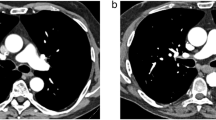Abstract
Introduction
Lower radiopharmaceutical activities are used for myocardial perfusion scintigraphy (MPS) in the UK than in other countries. There is no evidence to suggest that higher activities improve imaging or clinical outcome.
Materials and methods
We undertook a multicentre study of the relationship between radiopharmaceutical activity and imaging outcome. Fifty-one patients with clinical referrals for MPS followed a 2-day protocol with an injection of 1,000 MBq 99mTc-tetrofosmin for each of the stress and rest images. ECG-gated acquisition was performed in three rotations occupying 25, 35 and 40% of a standard acquisition, and rotations were summed to simulate administered activities of 250, 400, 750 and 1,000 MBq. Each set of images was reported by an experienced physician who was blinded to all clinical information and to the simulated activity. Scores were assigned for image quality, low count, attenuation and reconstruction artefact, segmental tracer uptake, segmental and global defect classification, and confidence in the global classification. The images were reported twice to assess intra-observer variability.
Results
Positive relationships were found between administered activity and overall image quality, observer confidence and intra-observer agreement of uptake score, and a negative relationship was found with low-count artefact. For the majority of comparisons, there was no additional improvement with increasing activity from 750 to 1,000 MBq. Intra-observer agreement was found to be better in female patients and in those below average body mass index.
Discussion
We conclude that higher administered radiopharmaceutical activities lead to better quality images and improved surrogate parameters for clinical outcome, but that activities above 750 MBq may be unnecessary in average patients.



Similar content being viewed by others
References
Administration of Radioactive Substances Advisory Committee. Notes for guidance on the clinical administration of radiopharmaceuticals and use of sealed radioactive sources. March 2006.
IAEA Safety Series No 115, International Basic Safety Standards for Protection against Ionizing Radiation and for the Safety of Radiation Sources (1996), p. 283.
Anagnostopoulos CA, Harbinson MT, Kelion A, et al. Procedure guidelines for radionuclide myocardial perfusion imaging. Heart 2003;89:1156–6.
Kapur A, Latus KA, Davies G, et al. A comparison of three radionuclide myocardial perfusion tracers in clinical practice: the ROBUST Study. Eur J Nucl Med 2002;29:1608–16.
Germano G, Kiat H, Kavanagh PB, et al. Automatic quantification of ejection fraction from gated myocardial perfusion SPECT. J Nucl Med 1995;36:2138–47.
Julious SA. Using confidence intervals around individual means to assess statistical significance between two means. Pharmaceut Statist 2004;3:217–22.
Landis JR, Koch GG. The measurement of observer agreement for categorical data. Biometrics 1977;33:159–74.
Squassante L, Robinson CN, Palmer RL. Simple graphical methods of displaying multiple clinical results. Pharmaceut Statist 2006;5:51–60.
Donner A. Sample size requirements for the comparison of two or more coefficients of inter-observer agreement. Stat Med 1998;17:1157–68.
Fisher RA. Statistical methods for research workers. 13th ed. New Jersey: Hafner Publishing Company Inc; 1958.
Rollo FD. Nuclear medicine physics, instrumentation, and agents. Saint Louis: CV Mosby; 1977, p. 395 (ISBN 0-8016-4181-0).
Cherry SR, Sorenson JA, Phelps ME. Physics in nuclear medicine (3rd ed). PA: Saunders 2003, p. 267 (ISBN 0-7216-8341-X).
Bavelaar-Croon CDL, Pauwels EKJ, van der Wall EE. Gated single-photon emission computed tomographic myocardial imaging: a new tool in clinical cardiology. Am Heart J 2001;141:383–90.
Notghi A, Williams N, Smith NK, Goyle S, Harding LK. Relationship between myocardial counts and patient weight: adjusting the injection activity in myocardial perfusion scans. Nucl Med Commun 2003;24:55–9.
Acknowledgements
The study was partially funded by the Department of Health, but the Department was not involved in the study design or execution or in writing or approving the manuscript. We would like to thank the clinical staff who assisted with patient recruitment and imaging, especially J O’Brien, R Fernandez and P Hillel.
Author information
Authors and Affiliations
Corresponding author
Rights and permissions
About this article
Cite this article
Robinson, C.N., van Aswegen, A., Julious, S.A. et al. The relationship between administered radiopharmaceutical activity in myocardial perfusion scintigraphy and imaging outcome. Eur J Nucl Med Mol Imaging 35, 329–335 (2008). https://doi.org/10.1007/s00259-007-0597-9
Received:
Accepted:
Published:
Issue Date:
DOI: https://doi.org/10.1007/s00259-007-0597-9




